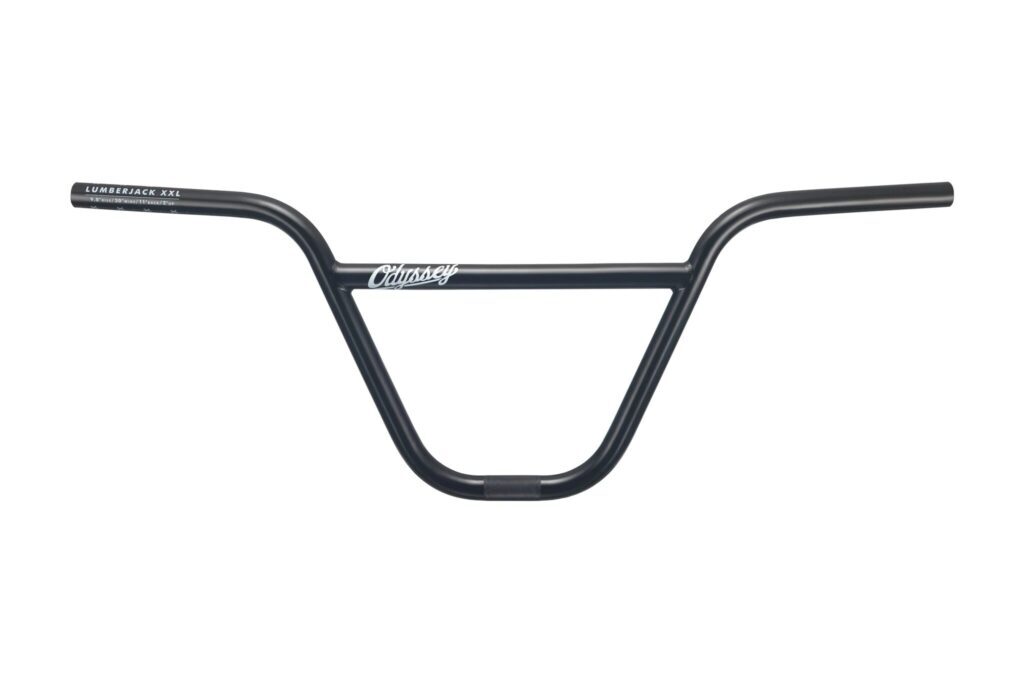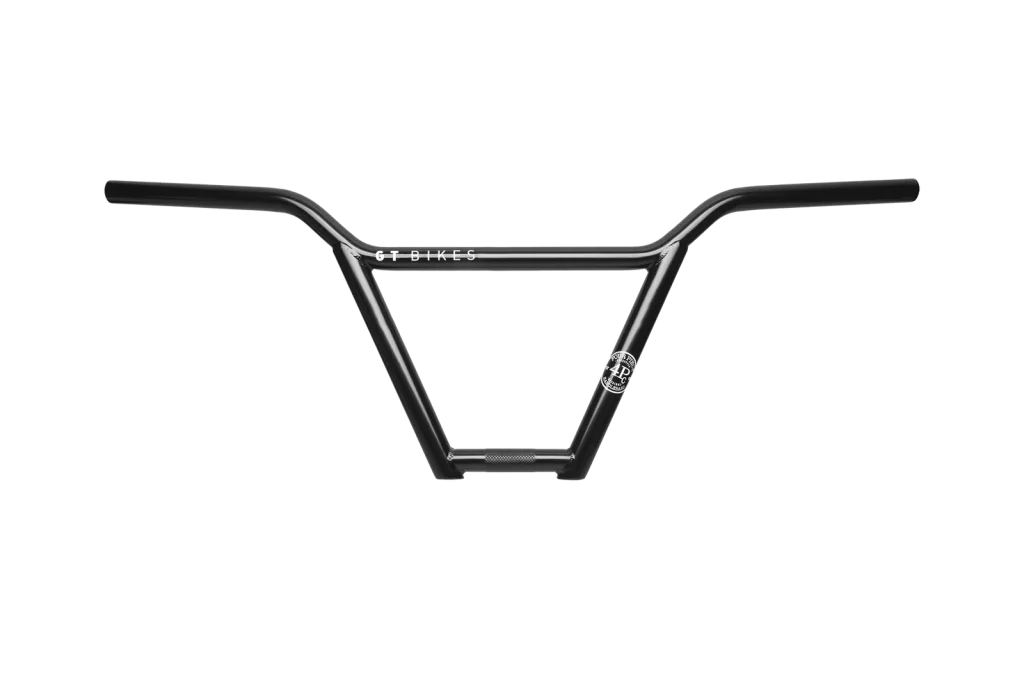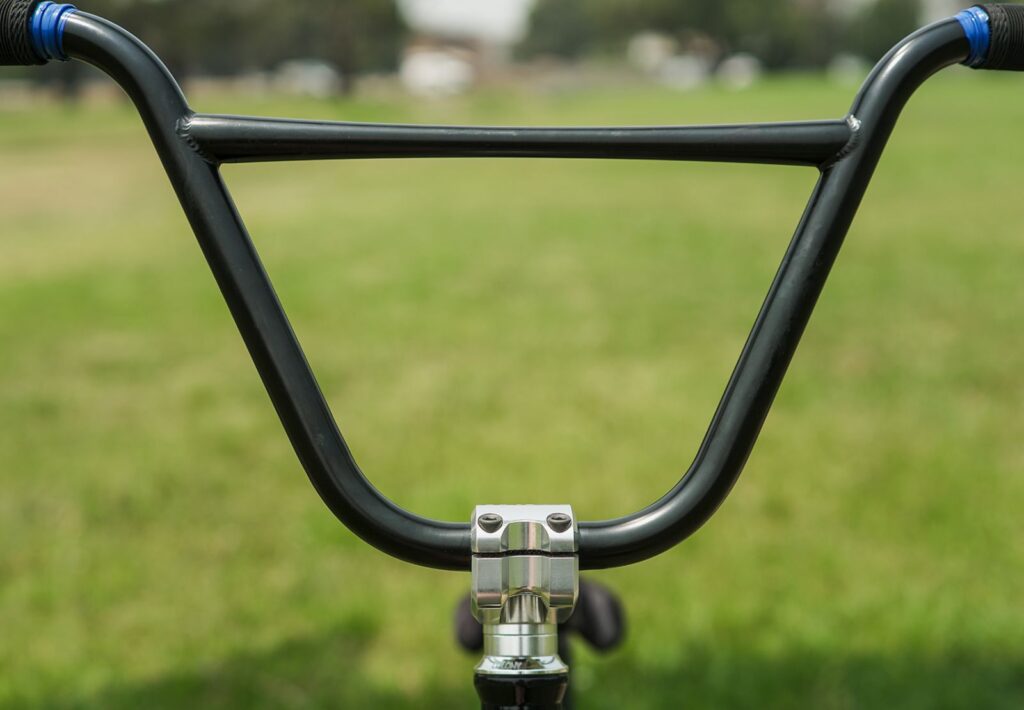BMX riding is an exhilarating sport, full of thrills and skills that demand not only physical prowess but also a deep understanding of your equipment. Central to this is the handlebar – a critical component that steers not just your bike, but also your entire riding experience. In this article, we delve into the world of BMX handlebars, exploring their types, features, and the nuances that make each one unique.

BMX handlebars are more than just a part of the bike; they are an extension of the rider. They influence everything from riding style to comfort and performance. Whether you’re a novice just starting out or a seasoned pro, understanding the role of different handlebars in your ride is essential. From the sleek, classic two-piece bars to the more intricate four-piece ones, each has its story and style.
BMX handlebars are more than just a part of the bike; they are an extension of the rider.
Here, we will guide you through the intricate details of BMX handlebars. You’ll learn about their importance in BMX riding, the different types available, and how to choose the right one for your ride. This is the beginning of a journey to enhance your BMX experience, tailored to your style and needs. Let’s dive into the dynamic world of BMX handlebars.
Introduction
The Significance of Handlebar Type in BMX Riding
The Significance of Handlebar Type in BMX Riding
When it comes to BMX riding, the type of handlebar you choose can significantly impact your overall experience. Handlebars are not just a steering tool; they are pivotal in defining your riding style, comfort, and performance. As a beginner, understanding these nuances is crucial to enhancing your ride.
So, how do different BMX handlebars affect the riding experience? The answer lies in the details. Each handlebar type brings its own set of characteristics. For example, the classic two-piece handlebar offers a traditional look and is known for its simplicity and strength. It’s made up of two pieces welded together, creating a sturdy and reliable option for riders. On the other hand, four-piece handlebars, with their distinct, jagged appearance, provide a different aesthetic and are often chosen for their style as much as their function.

The choice between these types often boils down to personal preference and the kind of BMX riding you’re into. Whether it’s the sleek and smooth lines of a two-piece or the bold and robust form of a four-piece, each type contributes differently to the bike’s overall feel and handling. Interestingly, some riders perceive that two-piece bars offer more flex, which can affect the handling during tricks and jumps. However, this is often a matter of individual feel rather than a definitive rule.
Comfort and control are paramount in BMX, and handlebars play a significant role in this. The right handlebar type can enhance your control during maneuvers, impact how the bike responds to your movements, and ultimately affect your confidence and safety on the bike. As we delve deeper into the intricacies of BMX handlebars, keep these considerations in mind, as they are fundamental to finding the handlebar that fits your riding style perfectly.
Differences
What Are the Differences Between Two-Piece and Four-Piece BMX Handlebars?
What Are the Differences Between Two-Piece and Four-Piece BMX Handlebars?
| Feature | Two-Piece Handlebars | Four-Piece Handlebars |
|---|---|---|
| Design | Classic, streamlined look. One piece across the top, another forming the handles. | Segmented, robust design. Multiple pieces welded together for a jagged appearance. |
| Style Association | Often linked to West Coast style BMX riding. | Commonly associated with East Coast style BMX riding. |
| Flexibility | Perceived to have less flex due to simpler construction. | Some riders believe these offer more flex, but it varies based on material and build. |
| Feel | Feel remains consistent with the same geometry, regardless of design. | Similar to two-piece in feel if the shape and geometry are the same. |
| Personal Preference | Preferred for its sleekness and simplicity. Ideal for riders favoring a classic look. | Chosen for its distinct look and potential for a different feel. Appeals to those seeking a unique style. |
Two-piece and four-piece BMX handlebars are much more than just structural variations; they represent different styles and preferences in the BMX community. Let’s break down these differences to help you understand which type might suit you best.

Two-piece handlebars, characterized by their single top bar welded to another bar that forms the handles, are the quintessential BMX handlebar. These handlebars offer a classic, streamlined look and are widely regarded for their strength and simplicity. This style is often associated with a “West Coast” vibe, embodying a smooth and classic aesthetic. Riders who prefer a straightforward, traditional handlebar often gravitate towards the two-piece design.
On the flip side, four-piece handlebars make a bold statement with their distinct design. Consisting of two vertical bars connected by two horizontal crossbars, they offer a more segmented and rugged appearance. This style is sometimes linked with an “East Coast” urban flair, appealing to riders who want their BMX to stand out in terms of style. While some riders believe four-piece bars offer less flex compared to two-piece bars, this is often subjective and based on personal feel rather than a definitive feature.
Ultimately, the choice between two-piece and four-piece handlebars boils down to personal preference and the type of BMX riding you engage in. Whether you’re cruising down city streets or performing tricks at a skatepark, the right handlebars not only complement your BMX’s appearance but also contribute to your control and comfort on the bike.
DImensions and Angles
How Important Are Handlebar Dimensions and Angles for BMX Riding?
How Important Are Handlebar Dimensions and Angles for BMX Riding?
Understanding the dimensions and angles of BMX handlebars is crucial for riders, especially beginners. It’s not just about the look; it’s about how these dimensions affect your riding experience. Let’s explore these aspects, using the signature Fit By Co sleeper bars as a reference.
The height of the handlebar is a key factor in how the bike handles and feels. Taller bars can offer more control and are often preferred by riders who engage in freestyle or street BMX, where maneuverability is essential. On the other hand, shorter bars can be better for racing or riders who prefer a lower center of gravity for speed and stability.
The height of the handlebar is a key factor in how the bike handles and feels.
The width of the handlebar also plays a significant role. Wider bars can offer more leverage and stability, which is beneficial for tricks and jumps. However, they might be cumbersome for riders with smaller frames or those who prefer a more nimble setup.
When it comes to angles, the ‘back sweep’ and ‘up sweep’ are critical. The back sweep is the degree to which the bars angle towards the rider. A classic back sweep provides a comfortable wrist angle during rides. Conversely, the up sweep refers to the angle at which the bars bend upwards. A higher up sweep can offer a more aggressive stance, beneficial for certain riding styles.
Each rider’s preference for handlebar dimensions will be unique, influenced by their body size, riding style, and comfort. By understanding these nuances, you can make an informed choice about the handlebars that will best suit your BMX riding experience.
Material and Manufacturing
What Makes BMX Handlebars Durable and Strong?
What Makes BMX Handlebars Durable and Strong?
The choice of material and the manufacturing process are critical factors that determine the durability, strength, and overall quality of BMX handlebars. Understanding these aspects will help you make an informed decision when selecting the right handlebars for your bike.

BMX handlebars are commonly made from two types of steel: chromoly steel and high-tensile steel. Chromoly steel is renowned for its strength and lightweight properties. It’s a preferred material for high-end BMX handlebars, offering excellent durability and resistance to bending or breaking under extreme riding conditions. On the other hand, high-tensile steel, often found in more affordable BMX handlebars, provides good strength but typically weighs more and may not offer the same level of resilience as chromoly steel.
Chromoly steel offers greater strength and durability for BMX riding, while high-tensile steel, lighter and more affordable, is less resistant to stress and bending.
A crucial aspect of handlebar manufacturing is the heat treating process. This process involves heating the entire handlebar to a high temperature and then allowing it to cool uniformly. Heat treating significantly enhances the strength of the metal, making it more durable and reliable for demanding BMX riding styles. For instance, some high-end BMX bars undergo this process to ensure they can withstand the rigors of jumps, stunts, and aggressive riding.
It’s also important to consider the construction style of the handlebars. For example, some bars use straight gauge tubing, maintaining equal thickness throughout, which provides consistent strength but might be heavier. Others employ tapered tubing, which varies in thickness at different points, reducing weight while maintaining strength where it’s needed most.
As a rider, understanding these manufacturing nuances allows you to choose handlebars that will not only fit your riding style but also last longer and provide the reliability you need, whether you’re performing high-flying tricks or cruising through the streets.
Conclusion
How to Choose the Right Handlebar for Your BMX Bike?
How to Choose the Right Handlebar for Your BMX Bike?
Choosing the right handlebar for your BMX bike is a vital decision, especially for beginners. It’s not just about the aesthetics; it’s about finding the perfect match for your riding style, height, and the type of BMX riding you are into.
Rider height plays a significant role in handlebar selection. Taller riders might find comfort in higher handlebars as they provide better control and reduce the need to hunch over, which can be uncomfortable during long rides. Conversely, shorter riders may benefit from lower handlebars for better reach and control.
Your riding style is another crucial factor. If you’re into BMX racing, you might prefer a lighter and more aerodynamic handlebar. For freestyle or street riding, a sturdier and more durable handlebar, possibly with more width for better control during tricks, would be ideal.
The type of BMX bike you have also influences your handlebar choice. Different BMX disciplines like racing, street, and park riding require different handlebar types. A racing BMX typically needs a more streamlined handlebar for speed, while a street BMX handlebar is built for durability and maneuverability.
Lastly, don’t overlook the importance of material and build quality. Chromoly steel handlebars are generally more robust and durable, making them a worthwhile investment for riders who prioritize longevity and performance.




